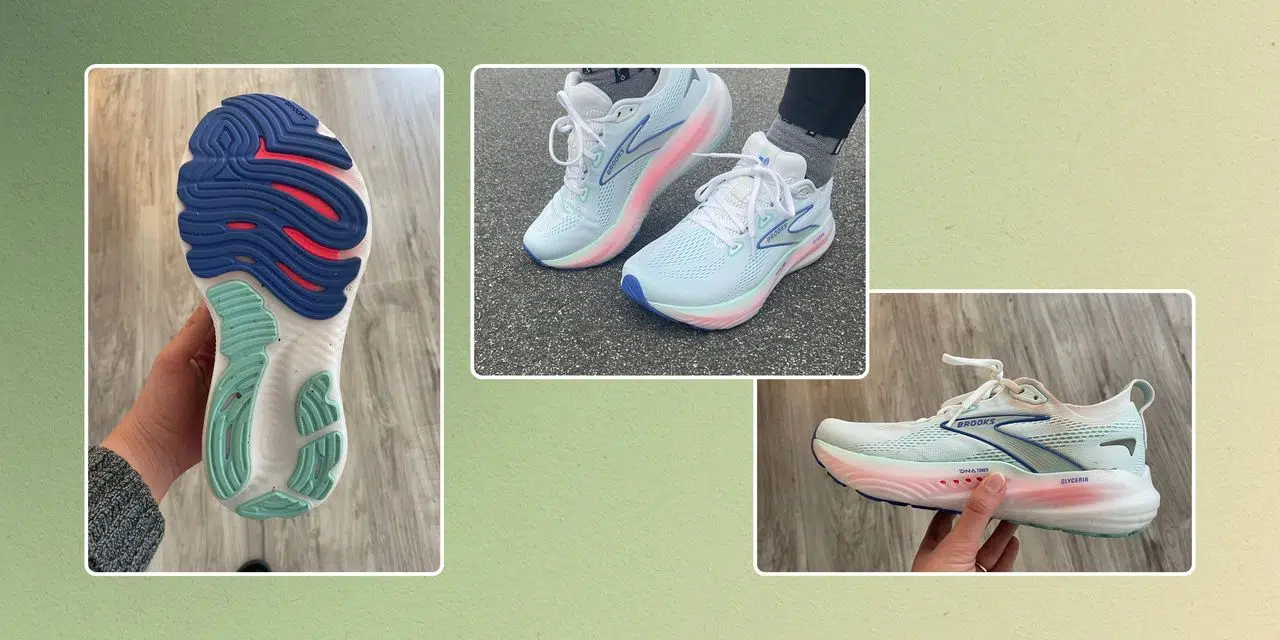The New Brooks Glycerin 22 Is a Picky Runner’s Dream


With so many options to choose from, shopping for running shoes can bring up some surprisingly existential questions. Am I a “max cushioning” person—someone who values comfort, possibly over performance? Or do I care more about running fast, even if it means my feet don’t feel as cradled as they could?
Usually, all of this soul-searching leads me to settle for one everyday sneaker that’s missing some of my must-haves, or to spend extra on two pairs to rotate through. Enter the Brooks Glycerin 22 ($165, brooks.com), the newest update to an already-beloved shoe. To see if this latest version measures up to the previous ones, I put the 22 to the test. What I discovered? Thanks to some seriously inventive tech, the Glycerin 22 is kinda like two shoes in one—let me explain.
The Design
When you see a number like 22 next to the name of a shoe, you know it’s been around for a while (and usually, there’s a good reason why). The Glycerin is one of Brooks’s most popular models. It’s a neutral running shoe, meaning it doesn’t have any extra stability features for those who overpronate, but it packs a great deal of cushioning. If Brooks’s classic Ghost line is like a trusty Honda Civic, then the Glycerin is more like a Cadillac, with its ultra-thick padding and smooth ride, says Caroline Bermel, product marketing specialist and head shoe tester at Fleet Feet.
The Technology
Like its predecessor, the Glycerin 21—a 2024 SELF Sneaker Award winner—the 22 has a comfortable knit upper, a 10-millimeter heel-to-toe drop, and a grippy rubber outsole that looks as though it’ll last a long time. Most important is the “DNA Tuned” midsole, which is made with a nitrogen-infused foam. Brooks has been injecting nitrogen into its shoes’ midsoles for several years now—the brand says it gives their sneaks an energy boost while also making them lighter.
The Test Run
This time around, Brooks “tuned” those nitrogen injections to meet the needs of different parts of the shoe. There are bigger nitrogen cells in the Glycerin 22’s heel for a plusher, softer feel, while smaller cells in the forefoot are firmer and more responsive. Since most runners strike the ground with their heels first, the sneaker is designed to absorb more shock in the back and provide a firmer push-off in the front to get you off the ground quickly. It’s a real best-of-both-worlds situation.
Conclusion
This isn’t the first Brooks model with DNA Tuned foam—that was the Glycerin Max, which came out last year. But I believe the 22 does it better (as I soon found out on my test runs). The Glycerin 22 is a great option for runners who want a shoe that can handle long distances and high mileage while still providing a comfortable, cushioned ride.
Frequently Asked Questions
- Is the Glycerin 22 suitable for high-mileage runners?
- Yes, the Glycerin 22 is designed for high-mileage runners, with its DNA Tuned midsole providing excellent cushioning and support.
- Can I wear the Glycerin 22 for shorter runs?
- Yes, the Glycerin 22 is suitable for shorter runs, but it may feel too cushioned for some runners. If you prefer a more responsive ride, you may want to consider a shoe with a firmer midsole.
- Is the Glycerin 22 available in different widths?
- Yes, the Glycerin 22 is available in a range of widths, including narrow, medium, and wide, to fit different foot shapes and sizes.
Recent Posts
Why Supermarkets in Australia Have Recalled Bagged Salad Products
E. coli and STEC E. coli is a bacterium that normally lives in the intestines…
Sydney Wells Takes on a Busy 2025 Season, Grateful for Increased Opportunities
Sydney Wells: A Busy Season Ahead Sydney Wells made her CrossFit Games debut in 2023,…
Bariatric Surgery May Improve Outcomes for Patients With MASH
Bariatric Surgery Aids Sustained Weight Loss and May Help Treat Metabolic Dysfunction-Associated Steatohepatitis (MASH) A…
AI Robot Pets Can be Adorable and Emotionally Responsive
AI Companionship and its Complexities Remember Furby, the eerie, gremlin-like toys from the late 90s…
Foreign aid cuts could mean 10 million more HIV infections by 2030
Sustaining Progress in the Fight Against HIV In January, the Trump administration ordered a broad…
2025 Detroit Pro Bodybuilding Show
2025 Detroit Pro Rosters The 2025 Detroit Pro, set for Saturday, March 29, in Dearborn,…


